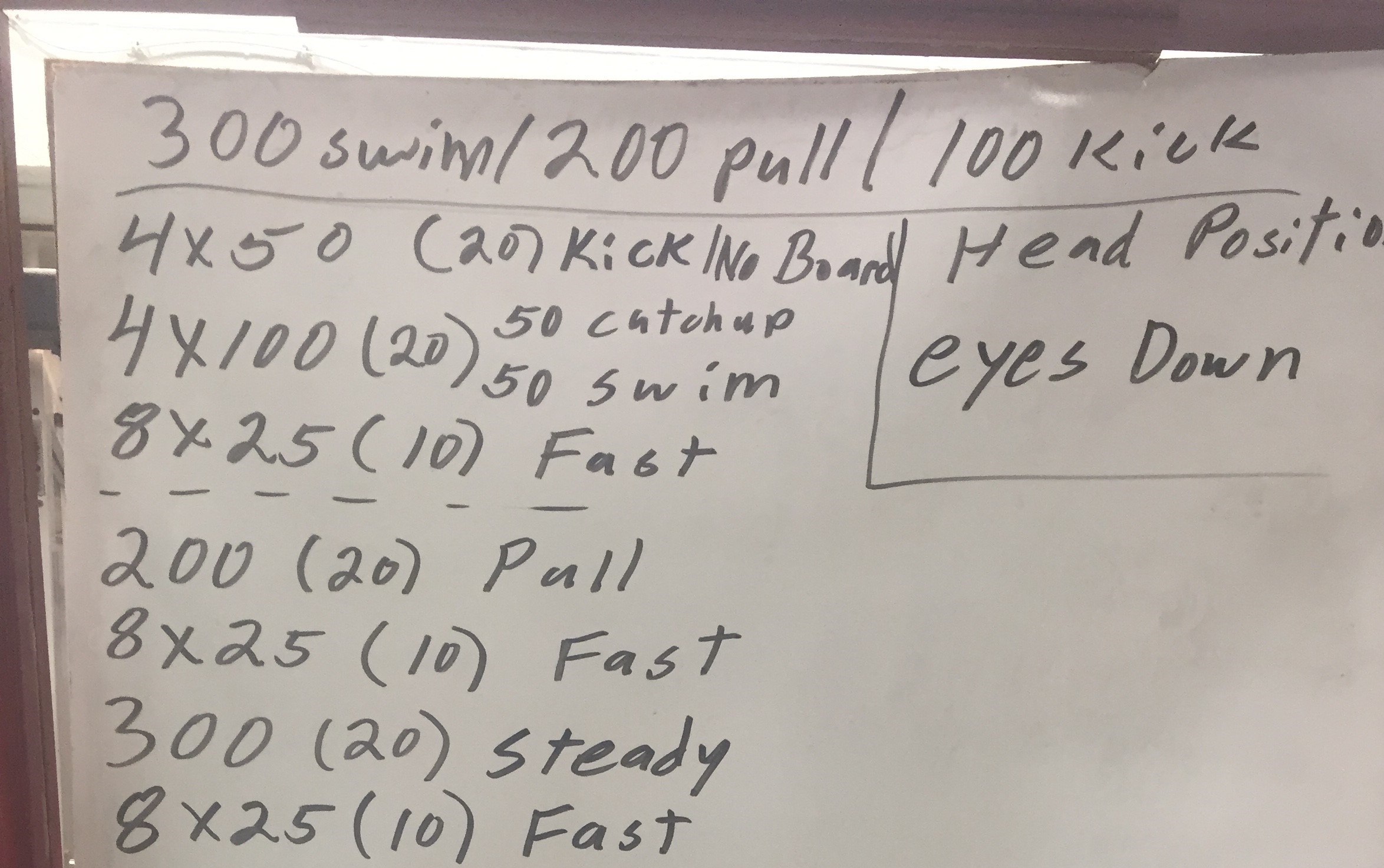Understanding Swim Terms
If you are new to swimming with a training group there may be some nomenclature that is unfamiliar to you. Even if you are an experienced swimmer, coaches often use different nomenclature and terms. I’m going to write out the terms we typically use for Sport Speed Lab swim workouts.
4×100 (20”) Fast
The term above is how a typical swim set is written out. The first part (4×100) is the work interval. This means you will swim 100 yards/meters four times over. The second part (20”) is the rest interval. This means you will rest for 20 seconds between each 100 yard/meter swim. The third part (Fast) is the intensity at which you will swim each 100 yard/meter swim.
Pace
Pace refers to your speed for 100 yards or meters. Usually written as time/100 yards or meters depending on the length of the pool you are swimming in; 1:50/100 means a minute and 50 seconds per 100 yards or meters.
Build
4×100 (20”) Build
Build means getting faster within the individual swim. In this case you would swim 100 yards/meters and progressively swim faster during the 100 yard/meter swim.
Descend
4×100(20”) Descend
Descend means each swim is faster in time than the previous swim. In this case, each subsequent 100 would be swum faster than the previous 100. For example, you might swim the first 100 in 2:00, the second in 1:55, the third in 1:50 and the fourth in 1:45.
t-pace
t-pace means test pace or your pace for 100 yards/meters. This is the pace you have determined in a test swim. Test swims vary. A typical test swim is a 1000 yard time trial. In this case your t-pace would be the average 100 yard pace maintained during the 1000 yard swim. Another typical test is 3×300 (30”) fast. In this case your t-pace would be the average 100 yard pace for the 3×300.
Send Off
4×100@2:00
4×100@t-pace +10”
Send off means leaving the wall at the same time for each swim. You control how much time you get to rest by how fast you swim the indicated distance. For the above example you would leave the wall every 2 minutes and any time until the 2 minute mark is rest time. Or for the second example you would add 10” to your t-pace and leave the wall at that time (if t-pace is 1:40, then 1:40+10”=1:50 send off). You can also swim faster than t-pace for example t-pace -5” means the send off would be 1:35.
EZ
An easy swim used for recovery or warm up. Generally is a slower swim at an easy effort.
Mod
Moderate pace. May also mean moderate effort when pushing/pulling the water.
Fast
Fastest pace you can swim for the given distance. Fast for a 50 yard swim would be a faster pace than for a 300 yard swim. Generally both the effort to move the arms and the speed at which the arms move is increased.
Hard
Hardest effort you can give to push/pull the water for the given distance. Arms are not moving faster per se, but the effort is increased to its maximum.
Sprint
12×25 (10”) Sprint
All out fast; no holding back swimming.
Race Pace
Race Pace usually refers to the pace you plan to swim at your next race. This pace will depend on your race distance – sprint swim pace would be faster than an Ironman swim pace.
Kick
1×200 Kick
This means a swim set where only kicking is done. Usually kick sets are done using a kick board. However, some kick swims are done without a kick board and will be indicated as “no board”.
Stroke
2×50 (20”) stroke
4×100(20”) 50 free/50 stroke
Stroke means to use any stroke except Freestyle. The second example means to swim each 100 as 50 freestyle then 50 any other stroke except freestyle.
Free
Means freestyle swimming.
DPS
4×100 (20”) DPS
Distance Per Stroke. Work on maximizing the distance a stroke can propel your body. Goal=the least number of strokes possible to get to the other end of the pool.
Odd/Even
4×200 (30”) odd mod/even fast
Additional instructions are given for the even and odd swims. In this example, swims 1 and 3 are moderate pace. Swims 2 and 4 are fast pace.
Negative Split
1×1000 negative split
Usually used for long swims. The goal is to swim the second half of the swim faster than the first half. In this example your goal might be to swim the first 500 of the 1000 at a pace of 1:50/100 yards and the second 500 at a pace of 1:45/100 yards.
WU
Warm up. Swim the distance to get yourself warmed up for the hard stuff.
CD
Cool down. Swim the distance indicated to help your heart rate return back to normal and your body to cool down.
Drill
Do a drill of your choice or the drill chosen by the coach as indicated.
TT
Time Trial.
RI
Rest Interval
These are just some of the swim terms you may see at your local master’s swim group or in a training plan.
